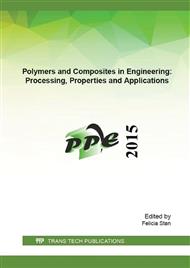p.49
p.57
p.63
p.71
p.80
p.86
p.91
p.97
p.104
Demolding Moment Calculation for Injected Parts with Internal Trapezoidal Thread
Abstract:
At the final step of the injection process (of a plastic product with cavities) when the part is on the point to be ejected the adhesion phenomena occurs between the core and the plastic part. The mold adhesion effect has a significant influence on the mold design ejection system and over the whole process. This paper presents a computation methodology of the demolding moment for two cases of plastic injected parts with internal trapezoidal thread. Knowing the value of this moment offer us the possibility to adopt the right design solution of the ejector system and of the entire mold. As further work the author will try to validate this method through a set of practical experiments.
Info:
Periodical:
Pages:
104-109
Citation:
Online since:
July 2016
Authors:
Keywords:
Price:
Сopyright:
© 2016 Trans Tech Publications Ltd. All Rights Reserved
Share:
Citation:


